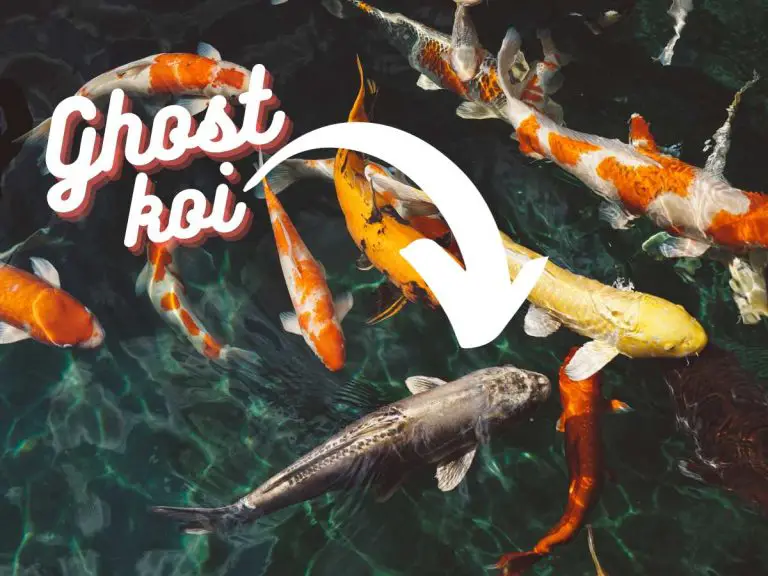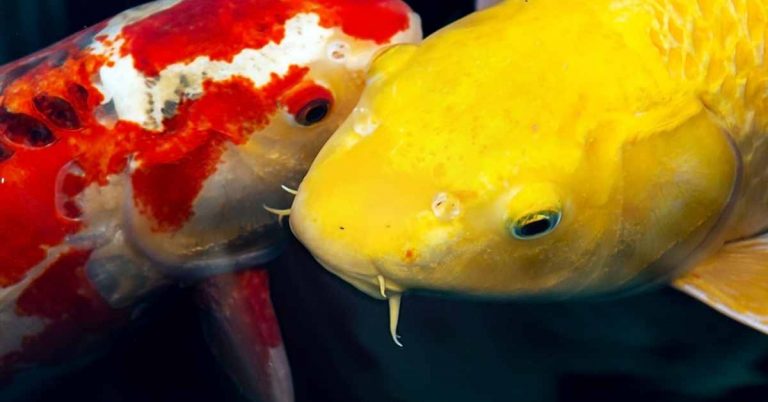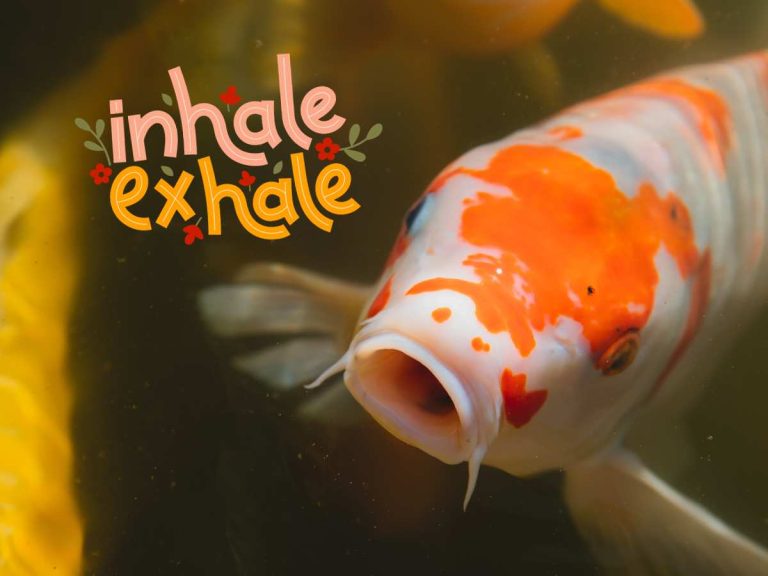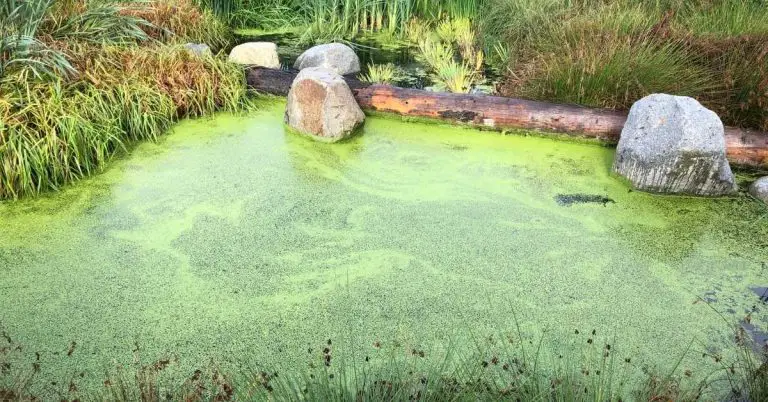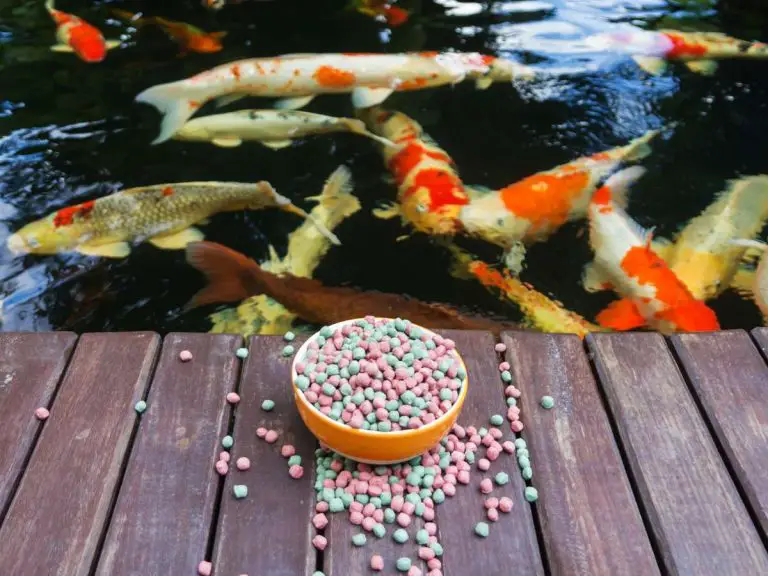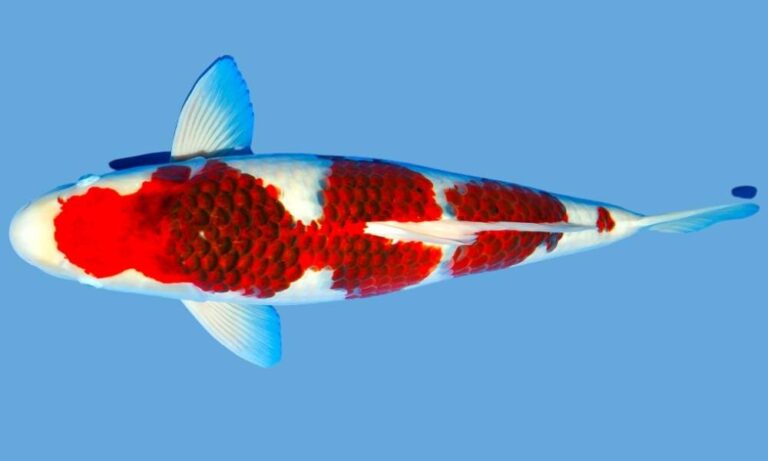How to Stop Koi Bullying: Techniques and Tips for a Peaceful Pond
The thought of koi bullying in your pond will rightly cause concern for any Koi owner. But don’t worry, because there are techniques and tips that can help prevent aggressive behavior in your koi fish.
So, how exactly can you stop koi bullying? First, you need to understand Koi behavior. All groups of Koi fish have a natural pecking order, but there are factors that can contribute to aggressive behavior.
The best way to minimize Koi aggression and restore peace to your pond is by implementing feeding strategies, behavioral conditioning techniques, and even physical deterrents like barriers and hiding spots. We go over all this below.
In the rest of this article, we’ll first establish a firm understanding koi fish behavior, then get into creating a peaceful environment for them, and implementing various techniques to prevent aggression.
So, if you’re ready to say goodbye to koi bullying and promote a harmonious atmosphere in your pond, keep reading!
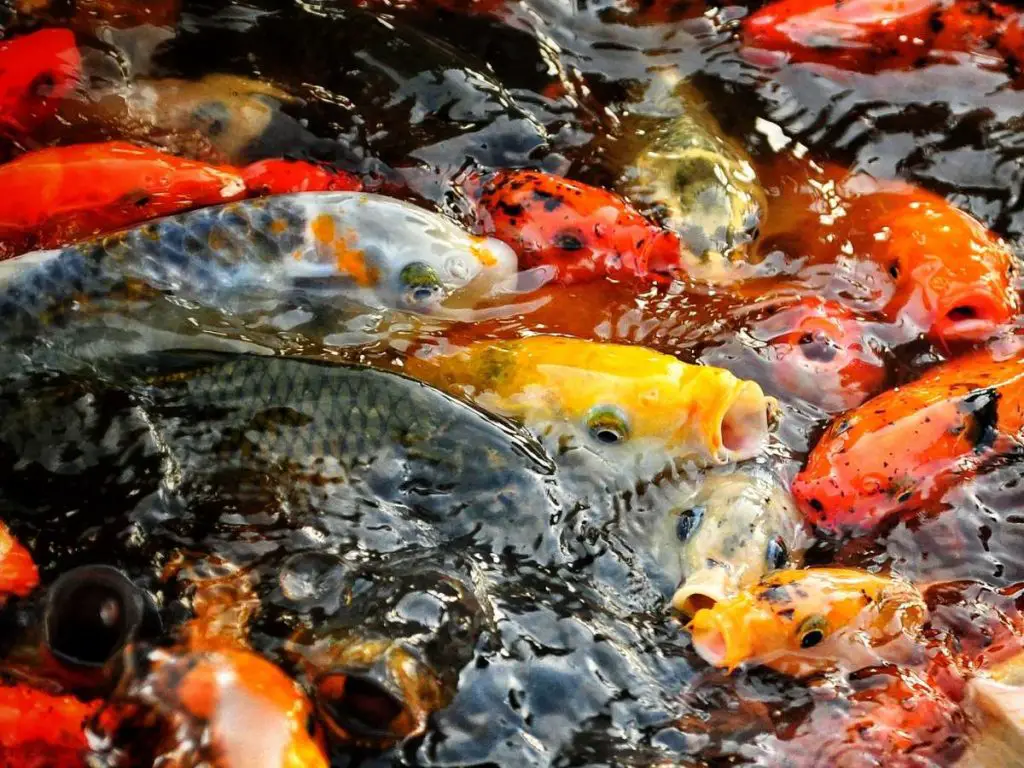
Understanding koi fish behavior
Koi fish are unique and fascinating creatures with their own set of behaviors and social dynamics. By understanding their natural instincts and behaviors, we can better address the issue of koi bullying and create a more harmonious environment for these beautiful fish.
Natural fish hierarchy and pecking order
In the world of koi fish, there is a hierarchy or pecking order that determines social dynamics within a group. Just like in any other animal species, some individuals will be more dominant, while others will be more submissive.
This pecking order is established through displays of dominance and competition for resources. The dominant fish will typically assert its authority by chasing away or even nipping at the lower-ranking fish.
Aggressive behaviors commonly displayed by koi fish
When it comes to aggression, koi fish can exhibit a range of behaviors. This can include chasing, nipping, fin damage, and even causing severe injuries to other fish within the group. It’s important to note that aggression is a natural behavior for koi fish, but excessive or persistent bullying can have a negative impact on the overall health and well-being of the entire group.
Aggression is often triggered by competition for resources such as food, territory, or mates. It can also be influenced by factors such as overcrowding or inadequate hiding spots, which can result in increased stress levels among the fish.
Factors that contribute to koi bullying
Several factors can contribute to the occurrence of koi bullying. One of the main factors is overcrowding, where too many fish are confined in a limited space, leading to increased competition and aggression.
Inadequate hiding spots or lack of territories can also contribute to aggression. Without enough areas for fish to retreat or establish their own territories, they may resort to aggressive behaviors to establish dominance.
Poor water quality or lack of proper filtration can also play a role in koi bullying. High ammonia or nitrate levels and stagnant water can increase stress levels among the fish, making them more prone to aggressive behaviors.
Identifying signs of koi bullying
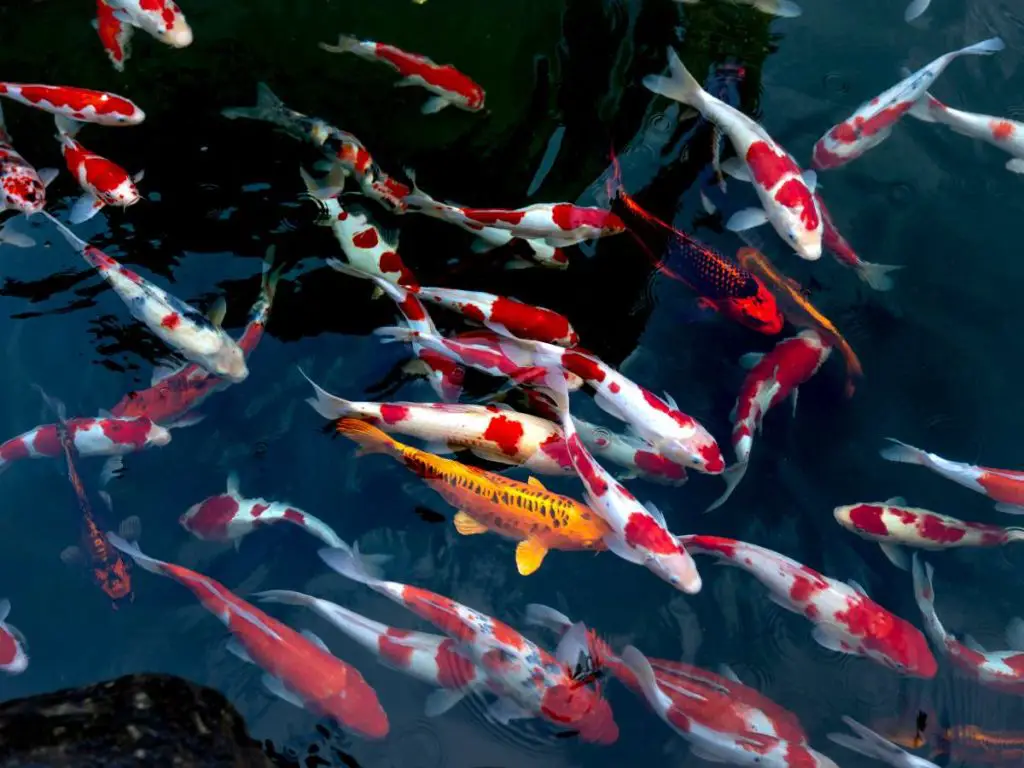
Understanding and recognizing the signs of koi bullying is crucial in order to address and prevent aggressive behavior in your pond. By being observant and proactive, you can ensure the well-being of your fish and maintain a harmonious environment. Here are some key signs to look out for:
Physical signs such as torn fins or injuries
If you notice torn or damaged fins, wounds, or injuries on your koi fish, it could be a clear indicator of aggressive behavior. Aggressive fish often nip or bite each other, causing visible physical harm. Take the time to regularly inspect the condition of your koi’s fins and body to spot any signs of physical aggression.
Behavioral signs such as chasing or nipping other fish
Koi bullies often exhibit specific behaviors that can help you identify them. Keep an eye out for fish that chase or constantly nip at other fish in the pond. Aggressive fish may appear to single out and relentlessly pursue specific individuals. These behaviors can cause stress and harm to the targeted fish.
Changes in feeding patterns or stress levels of other fish
Pay attention to any changes in the feeding patterns or stress levels of your koi and other pond fish. Aggressive behavior can disrupt the feeding routine of targeted fish, causing them to become hesitant or unable to eat properly. Additionally, bullied fish may exhibit signs of stress such as hiding, reduced activity, or even loss of appetite.
By actively monitoring your koi fish for these signs, you can quickly identify any instances of bullying and take appropriate action to address the issue. Remember, early detection is key to preventing further harm to your fish and maintaining a peaceful pond environment.
Creating a peaceful environment for koi fish
Creating a peaceful environment for your koi fish is essential to prevent aggression and bullying. These beautiful creatures thrive in a stress-free and harmonious ecosystem. Here are some tips to ensure your pond provides the perfect sanctuary for your koi friends.
Providing adequate space and hiding spots
Koi fish are active swimmers and need ample space to move around freely. Crowded living conditions can lead to increased stress and aggression. Ensure that your pond is large enough to accommodate the number of koi fish you have.
Additionally, adding hiding spots such as rocks, caves, or aquatic plants can help establish territories and provide refuge for any fish that may feel threatened or overwhelmed. These hiding spots create a sense of security and encourage peaceful coexistence among your koi community.
Maintaining water quality and proper filtration
A clean and well-maintained pond is crucial for the overall health and behavior of your koi fish. Poor water quality can lead to stress and weaken their immune systems, making them more susceptible to aggressive behavior.
Regularly test the water parameters, such as pH, ammonia, nitrites, and nitrates, to ensure they are within the recommended ranges. Implement a reliable filtration system to remove any excess waste and toxins, keeping the water clean and clear. Consider adding a biological filter to establish a healthy balance of beneficial bacteria that can help break down organic matter and maintain water quality.
Choosing compatible fish species for the pond
When selecting fish species to coexist with your koi, it is crucial to choose those that are compatible and have similar temperaments. Some species may be more peaceful and less likely to engage in aggressive behavior.
Research different fish species and their compatibility with koi before introducing them to your pond. Avoid adding aggressive or territorial fish that may disrupt the peaceful dynamics of your koi community. Maintaining a harmonious mix of fish species can significantly reduce the risk of bullying and ensure a tranquil environment for your koi.
Feeding strategies to prevent aggression
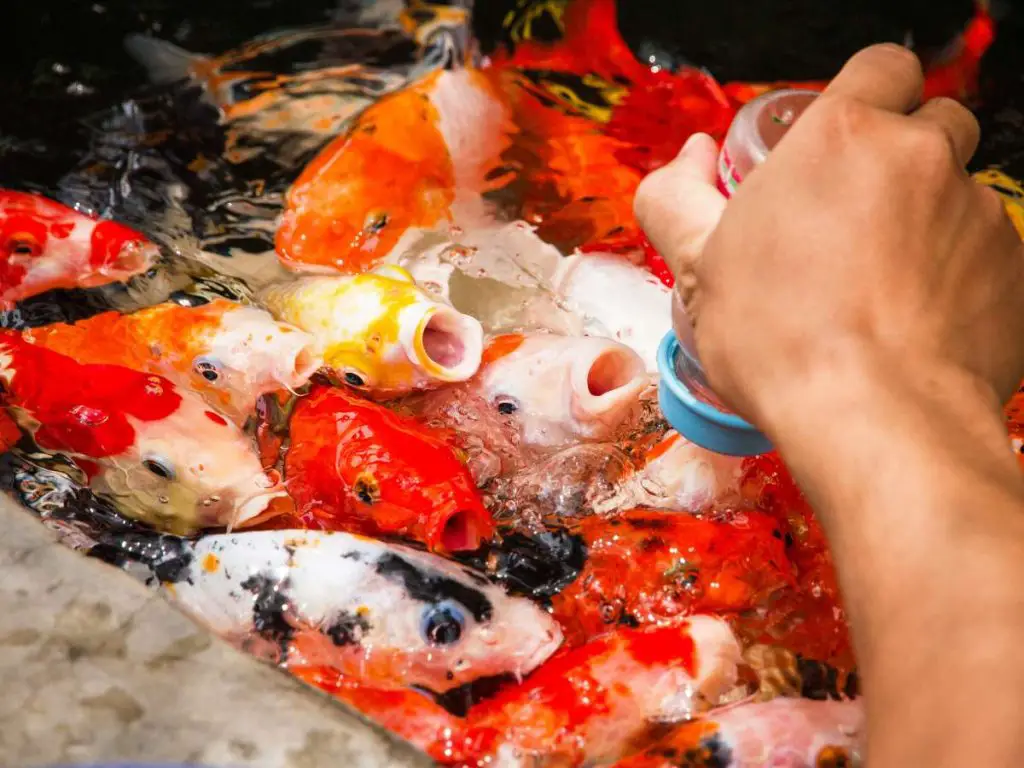
Feeding time can often be a prime opportunity for koi bullying to occur. The competition for food can lead to aggressive behavior among the fish. However, there are several feeding strategies you can employ to help reduce aggression and promote a more peaceful feeding environment.
Ensuring balanced and nutritious diet for koi fish
First and foremost, it is crucial to provide your koi fish with a well-balanced and nutritious diet. A diet that lacks essential nutrients can lead to increased stress and aggression. Ensure that the food you offer contains a good mix of proteins, vitamins, and minerals to support their overall health.
Feeding smaller and frequent meals to reduce competition
Instead of feeding your koi fish one large meal, try dividing their daily food allotment into several smaller meals throughout the day. This will help reduce the competition and frenzy that can occur during feeding time.
Smaller meals also allow for better digestion, reducing the chances of overeating or indigestion issues.
Using feeding rings or stations to distribute food evenly
Another effective strategy is to use feeding rings or stations to distribute food evenly throughout the pond. These devices can help create designated feeding areas, preventing one dominant fish from monopolizing all the food. Place the feeding rings in different locations to encourage fish to explore and feed in different areas of the pond.
Behavioral conditioning and training techniques
Behavioral conditioning and training techniques can be effective in reducing and discouraging aggression in koi fish. By using positive reinforcement and habituation exercises, you can help your koi develop more peaceful behaviors and establish a harmonious social dynamic within your pond.
Positive reinforcement to discourage aggression
Positive reinforcement involves rewarding desired behaviors in your koi fish to encourage them to repeat those behaviors. Whenever you notice your koi fish displaying calm and non-aggressive behavior, provide them with a treat or praise. This will associate the positive experience with the peaceful behavior, making them more likely to continue behaving that way.
Habituation exercises to desensitize aggressive behavior
Habituation exercises can help desensitize koi fish to certain triggers or stimuli that may provoke their aggression. Gradually expose your koi to these triggers in a controlled and safe manner, starting with a low-intensity version of the stimulus and gradually increasing it over time. This allows the fish to become accustomed to the stimulus without feeling threatened or aggressive.
For example, if your koi fish becomes aggressive during mealtime, you can create a routine of slowly introducing the food into the pond while the fish are in a calm state. This helps them associate the presence of food with a non-threatening environment, reducing their aggression during feeding.
In some cases, it may be necessary to separate aggressive fish from the group temporarily to establish new social dynamics. This can be done by using partitions within the pond or by placing the aggressive fish in a separate quarantine tank for a short period of time.
After a period of separation, reintroduce the fish back into the main pond or group, observing their behavior closely. Sometimes, the time apart can help reset the social dynamics and reduce aggression. If necessary, repeat this process with different combinations of fish until a harmonious balance is achieved.
Remember that each koi fish is unique, and what works for one may not work for another. It’s important to observe your fish closely and adjust your approach based on their individual behaviors and responses.
With patience and consistency, you can help promote a peaceful and harmonious environment for your koi fish.
Implementing physical barriers and deterrents
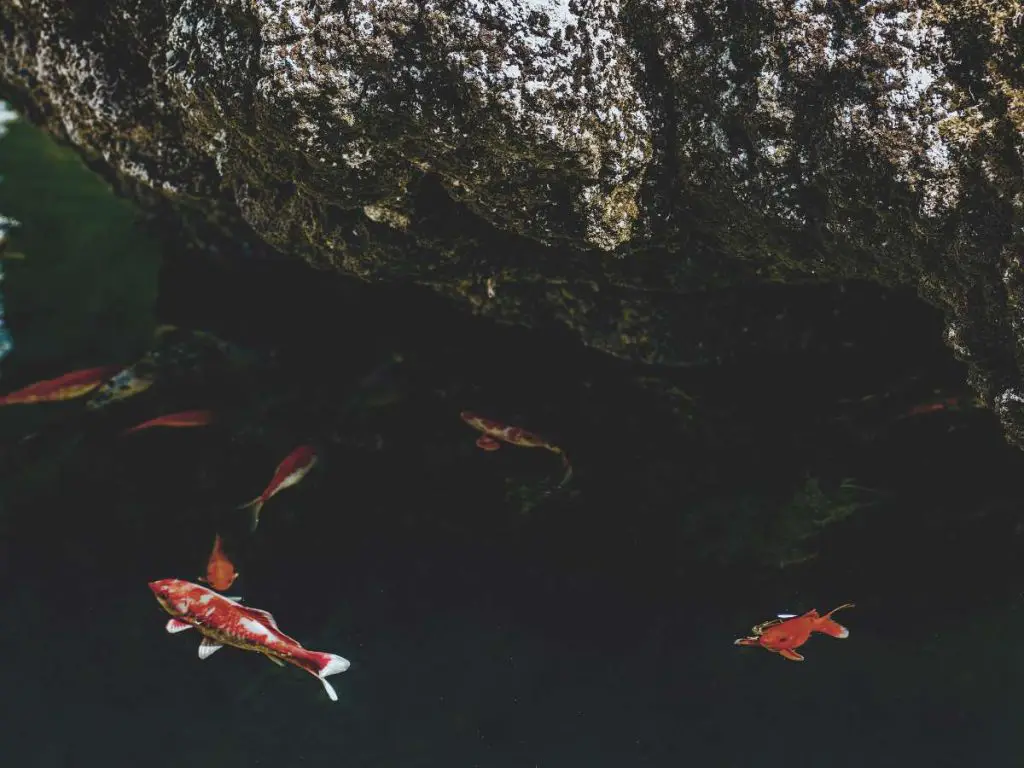
When dealing with koi bullying, sometimes it requires a more hands-on approach. Implementing physical barriers and deterrents can help separate fish temporarily and discourage aggressive behavior. Here are some effective strategies to consider:
Installing pond netting to separate fish temporarily
Pond netting can be a useful tool in creating temporary barriers between fish. By placing netting across different areas of the pond, you can physically separate aggressive koi from their targets.
This allows the bullied fish to regain their confidence and assert themselves, while giving the aggressor a time-out to think about their behavior.
It’s like putting them in fish timeout! Just make sure the netting is securely fastened to prevent any accidental entanglement or injury.
Creating submerged barriers to divide the pond space
If you want to establish more permanent divisions within your pond, consider creating submerged barriers.
These can be constructed using rocks, driftwood, or other materials that allow water to flow between them. By strategically placing these barriers, you can create distinct zones for different groups of koi.
This way, the aggressive individuals are unable to physically harm their tankmates, reducing the likelihood of bullying incidents. Plus, it adds an aesthetic touch to your pond!
Using decoy objects or mirrors to distract aggressive fish
Another clever way to deter koi bullying is by using decoy objects or mirrors. Aggressive koi are often territorial and may chase after other fish due to dominance disputes.
By strategically placing decoy objects or mirrors in the pond, you can redirect their attention and distract them from their bullying tendencies.
It’s like giving them something else to focus on, like a fishy hobby! Just make sure the decoy objects are safe for the fish and won’t cause any harm if they interact with them.
Monitoring and adapting your strategies
Remember, every pond and group of koi fish is unique, so it’s crucial to monitor the effectiveness of your strategies and adapt as needed. Observe how the koi respond to the physical barriers and deterrents you’ve implemented, and make adjustments accordingly.
You may need to try different combinations or positions of barriers to find what works best for your specific situation. The key is to remain flexible and open to trying new approaches until you achieve a more harmonious environment for your koi.
Final Thoughts
So there you have it – a comprehensive guide on how to stop koi bullying and create a peaceful environment for your beloved fish. By understanding koi fish behavior and identifying signs of aggression, you can take proactive steps to prevent bullying in your pond. Creating a suitable habitat with adequate space and hiding spots, maintaining water quality, and choosing compatible fish species are all important factors in fostering harmonious interactions among your koi fish.
Feeding strategies, such as providing a balanced diet and using feeding rings or stations, can help reduce competition and minimize aggression during mealtimes. Additionally, behavioral conditioning and training techniques, including positive reinforcement and habituation exercises, can discourage aggressive behavior and establish new social dynamics among your fish.
In some cases, physical barriers and deterrents may be necessary to temporarily separate fish and prevent further bullying. Pond netting, submerged barriers, and decoy objects or mirrors can be effective tools in diverting attention and diffusing aggressive encounters.
Remember, the key to stopping koi bullying is a proactive approach that promotes a peaceful and harmonious environment. By implementing these techniques and strategies, you can create a thriving pond ecosystem where your koi fish can thrive and coexist in tranquility.
Key Takeaways:
- Understanding koi fish behavior
- Identifying signs of koi bullying
- Creating a peaceful environment for koi fish
- Feeding strategies to prevent aggression
- Behavioral conditioning and training techniques
- Implementing physical barriers and deterrents
Related Questions
Can koi bullying lead to serious health issues for the bullied fish?
Yes, koi bullying can cause severe stress and physical injuries to the fish being targeted. The stressed fish may become more susceptible to diseases, and in some cases, the injuries can be fatal if left untreated. It is important to address koi bullying promptly to ensure the well-being of all fish in the pond.
Is it possible to completely eliminate koi bullying in a pond?
While it may be challenging to completely eliminate koi bullying, taking proactive measures can significantly reduce aggressive behavior. By providing a suitable environment, implementing feeding strategies, and engaging in behavioral conditioning, you can create a harmonious environment where koi fish coexist peacefully. Remember, each pond and group of fish are unique, so it may take some trial and error to find the most effective solutions.

